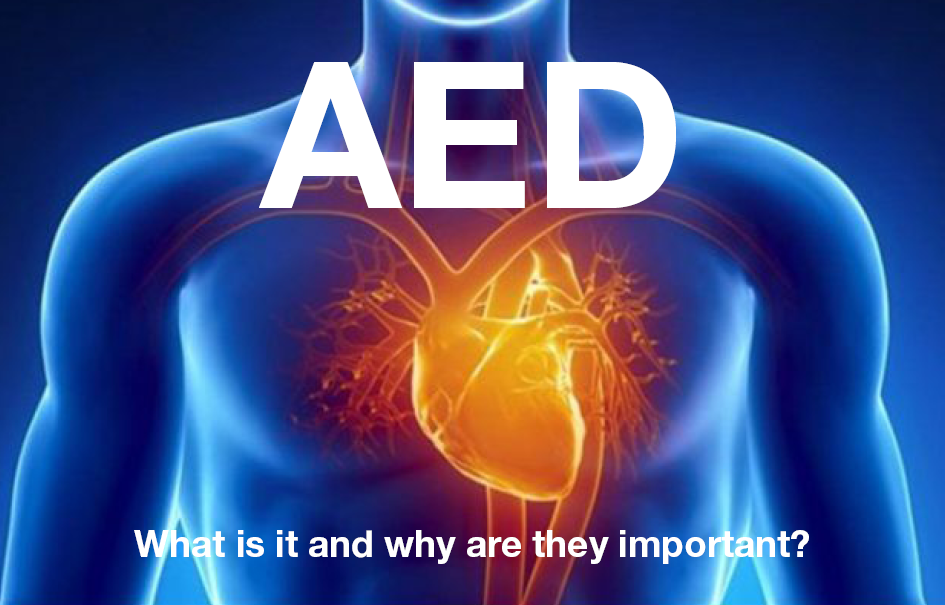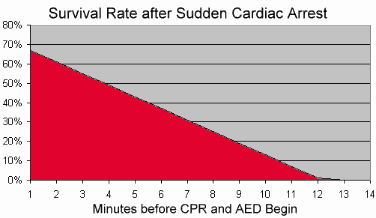
AED stands for‘ Automated External Defibrillator’, which is a device that detects lethal heart rhythms which stop the heart from pumping effectively, and then allows a rescuer to deliver a measured shock to a revert these rhythms, so the heart can pump effectively again.
DID YOU KNOW: That after the first 10 minutes of having a cardiac arrest your survival rates can drop to be less than 10% . The survival rate can drop between 7% to 10% for every minute the patient has to wait for defibrillation!

Are they safe to use?
Yes they are. The AED talks you through the process giving very simple directions on what to do and when.
Will I kill someone using a defibrillator?
No! AED’s will only deliver a shock to a heart if it detects a lethal rhythm via electrodes you stick to the person’s chest. These electrodes have sensors in them, and if they detect a normal heart rhythm they WILL NOT deliver a shock.
When do I use one?
You use a defibrillator when you need to undertake CPR, which is performed on an unconscious person who is not breathing normally e.g. regular, rhythmic breathing.
Can I re-use a defibrillator?
You will simply need to replace the electrodes, which were stuck to the patient’s chest. These are consumables and are readily available.
How easy are they to use?
Anyone who understands simple instructions in English and has CPR training can use the device.
What happens if I am touching the person when the AED shocks?
Probably nothing. You may feel a slight tingle. Try to not touch the person when the shock is delivered. If you should have latex gloves available, this should also protect you even if you are touching the patient’s chest at the moment of shock.
What if the victim is wet or lying on a wet surface?
Try to dry the chest with a towel before applying the pads. Defibrillation is most safely performed on a dry surface. The risks to rescuers and bystanders associated with defibrillating on a wet surface must be balanced against the risk to the patient of delaying defibrillation. If the patient cannot be safely and quickly moved to a dry surface, as far as possible all bystanders should move off the wet surface. Anyone that must be on the wet surface should avoid direct contact with the patient and should avoid contact between their body – particularly above their waist – and the wet surface, as far as possible. Wearing latex gloves will also reduce the likelihood of the rescuer being shocked in the event the rescuer is touching the patient at the moment of defibrillation.
When I attach the pads to the person in cardiac arrest, how long does it take for the AED to work?
The devices vary somewhat but in general once the pads are attached, the device takes 5-10 seconds to analyse the heart’s rhythm and another few seconds to charge itself up.
Do I need special training?
No. But it is strongly advised by the Australian Resuscitation Council (ARC) that your staff regularly undertake training in CPR.
Can I use them on children?
Yes. However, if the child is under 8 years of age, or under 25kgs in weight, you will need to use Child electrodes. For environments where children are at risk of cardiac arrest, such as from drowning or choking e.g. schools, public swimming pools, crèche’s or child care centres, it’s advisable to purchase a set of Child Electrodes.
Purchase your defibrillator TODAY: https://www.southland.com.au/site-workplace-safety/first-aid1/defibrillator-aed.html
Until next time, keep safe!
The Team at Southland
